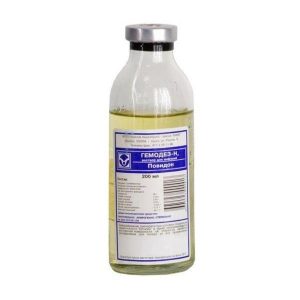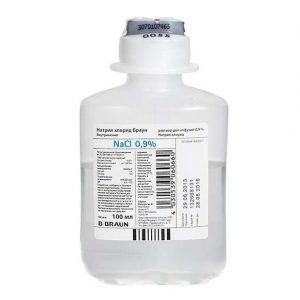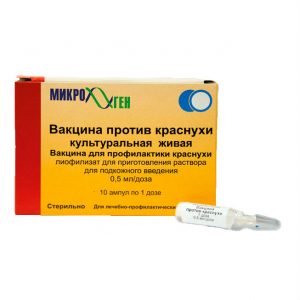Description
Pharmacological action of
Telavancin is a semisynthetic antibacterial drug of the lipoglycopeptide group, which has a concentration-dependent bactericidal effect against sensitive gram-positive bacteria. Telavancin inhibits cell wall biosynthesis by binding to late stage peptidoglycan precursors, including lipid II. Telavancin also binds to the bacterial membrane, disrupting its barrier function.
has been shown that telavancin is active against most strains of the following gram-positive microorganisms both in vitro and in the treatment of infections caused by Staphylococcus aureus (including methicillin-resistant strains), Enterococcus faecalis (only strains sensitive to vancomycin), Streptococcus agalactiae, an Streptococcus group (including S. anginosus, S. intermedius, and S. constellatus), Streptococcus pyogenes. According to in vitro studies, the postantibiotic effect of telavancin lasts from 1 to 6 hours.
For more than 90% of gram-positive microorganisms such as Enterococcus faecium (only isolates sensitive to vancomycin), Staphylococcus haemolyticus, Streptococcus equisimilis, Staphylococcus, Staphylococcus levels of minimal inhibitory concentration (MPC) were lower or equivalent to the threshold of sensitivity to telavancin of related species in in vitro studies. The clinical efficacy of telavancin in the treatment of infections caused by these microorganisms has not been studied.
Some vanocycin resistant Enterococcus spp. strains are characterized by reduced sensitivity to telavancin in vitro.
Telavancin is active only against gram-positive bacteria. For suspected or detected mixed infections caused by gram-negative and / or certain types of anaerobic bacteria, telavancin should be used in combination with other appropriate antibacterial agents.
Indications for
pneumonia and skin diseases:
Composition
1 vial: Active substances: telavancin (as hydrochloride) – 750 mg.
Excipients: hydroxypropyl betadex – 7.5 g, mannitol – 0.9375 g.
Side effects
The most frequently reported adverse reactions associated with taking the drug (occurring in> 1% of patients) were fungal infections, insomnia, dysgeusia, headache, dizziness, nausea, constipation, diarrhea, vomiting, increased activity of alaninamine trans increased activity of aspartate aminotransferase, itching. rash, acute renal failure, increased concentration of creatinine in the blood, deviations from the urine (foamy urine), fatigue and chills.
The frequency of unwanted adverse reactions, as recommended by WHO, was determined as follows: very frequent ( 1/10) frequent ( 1 / 100- <1/10) infrequent ( 1 / 1000- <1/100) rare ( 1 / 10000- <1/1000) very rare (<1/10 000) frequency is unknown (cannot be estimated based on available data). Infectious and parasitic diseases: frequent – fungal infections infrequent – pseudomembranous colitis, urinary tract infections. Disorders from the blood and lymphatic system: infrequent – anemia, leukopenia, thrombocythemia, thrombocytopenia, eosinophilia, neutrophilic leukocytosis. Immune system disorders: infrequent – hypersensitivity frequency unknown – anaphylaxis. Metabolic and nutritional disorders: infrequent – decreased appetite, hyperglycemia, hyperkalemia, hypoglycemia, hypokalemia, hypomagnesemia. Mental disorders: frequent – insomnia infrequent – agitation, anxiety, confusion, depression. Disorders of the nervous system: very frequent – dysgeusia frequent – headache, dizziness infrequent – agevzia, migraine, paresthesia, parosmia, drowsiness, tremor. Disorders of the organ of vision: infrequent – eye irritation, blurred vision. Hearing disorders and labyrinth disorders: infrequent – tinnitus rare – deafness. Heart disorders: infrequent – angina pectoris, atrial fibrillation, bradycardia, chronic heart failure, prolonged QT interval, palpitations, sinus tachycardia, supraventricular extrasystole, ventricular extrasystole. Vascular disorders: infrequent – hyperemia, increased blood pressure, decreased blood pressure, phlebitis. Disorders of the respiratory system, chest and mediastinal organs: infrequent – dyspnea, hiccups, nasal congestion, pain in the pharyngeal larynx. Disorders from the digestive tract: very frequent – frequent nausea – constipation, diarrhea, vomiting infrequent – abdominal pain, dry mouth, dyspepsia, flatulence, decreased sensitivity of the oral mucosa. Disorders of the liver and pain in the pharyngeal larynx. Disorders from the digestive tract: very frequent – frequent nausea – constipation, diarrhea, vomiting infrequent – abdominal pain, dry mouth, dyspepsia, flatulence, decreased sensitivity of the oral mucosa. Disorders of the liver and pain in the pharyngeal larynx. Disorders from the digestive tract: very frequent – frequent nausea – constipation, diarrhea, vomiting infrequent – abdominal pain, dry mouth, dyspepsia, flatulence, decreased sensitivity of the oral mucosa. Disorders of the liver andbiliary tract: infrequent – hepatitis. Disorders of the skin and subcutaneous tissues: frequent – itching, rash infrequent – erythema, facial swelling, hyperhidrosis, urticaria. Disorders of the musculoskeletal and connective tissue: infrequent – joint pain, back pain, muscle cramps, muscle pain. Disorders from the kidneys and urinary tract: frequent – acute renal failure, frothy urine infrequent – oliguria, pollakiuria, impaired renal function, change in the smell of urine. General disorders and disorders at the injection site: frequent – fatigue, chills infrequent – asthenia, reactions at the injection site, malaise, heartless chest pain, peripheral edema, pain, pyrexia, red person syndrome. Laboratory and instrumental data: frequent – increased activity of alanine aminotransferase, increased activity of aspartate aminotransferase, increased blood creatinine concentration infrequent – increased blood urea concentration, hematuria, microalbuminuria, increased INR. Storage conditions The drug should be stored in its original packaging, protected from light and out of the reach of children, at a temperature of 2 to 8 ° С. Do not use after expiration date. Expiration 4 years. Deystvuyuschee substances Telavantsyn dosage form lyophilisate for solution




